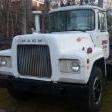-
Posts
2,618 -
Joined
-
Last visited
-
Days Won
37

doubleclutchinweasel replied to skydawg's topic in Antique and Classic Mack Trucks General Discussion

doubleclutchinweasel replied to skydawg's topic in Antique and Classic Mack Trucks General Discussion

doubleclutchinweasel replied to roadranger's topic in Antique and Classic Mack Trucks General Discussion

doubleclutchinweasel replied to touringsedan's topic in Antique and Classic Mack Trucks General Discussion

doubleclutchinweasel replied to Craig N's topic in Engine and Transmission

doubleclutchinweasel replied to Craig N's topic in Engine and Transmission

doubleclutchinweasel replied to Scott74's topic in Driveline and Suspension

doubleclutchinweasel replied to Gravelguy413's topic in Exterior, Cab, Accessories and Detailing

doubleclutchinweasel replied to Scott74's topic in Driveline and Suspension

doubleclutchinweasel replied to Craig N's topic in Engine and Transmission

doubleclutchinweasel replied to Gravelguy413's topic in Exterior, Cab, Accessories and Detailing

doubleclutchinweasel replied to h67st's topic in Antique and Classic Mack Trucks General Discussion

doubleclutchinweasel replied to 68-f-model's topic in Engine and Transmission

doubleclutchinweasel replied to Brandt's question in Mack Truck Q & A
BigMackTrucks.com is a support forum for antique, classic and modern Mack Trucks! The forum is owned and maintained by Watt's Truck Center, Inc. an independent, full service Mack dealer. The forums are not affiliated with Mack Trucks, Inc.
Thank you for your support!